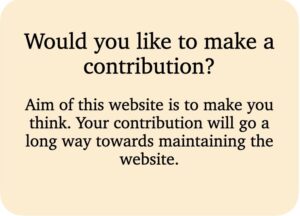I finished my formal education in the pre-internet era. In those days, learning something meant that you had to find a place where they taught the thing that you were interested in. Even if you did find such a place – preferably near your home – you had to be eligible for the course. Learning something informally meant that you had to scour for the relevant books. The rarer the book, lower were the chances of possessing it. And all of this cost money.
Fast forward to 2022. Knowledge is free.
YouTube has emerged as a prime hub for knowledge. I wake up everyday, go on YouTube, watch an amazing video and wonder for the millionth time as to how all this is easily available. The list of things I learned from YouTube is very long and keeps growing. I had no idea how to buy a domain and launch my own website. I gained most of the knowledge required for installing WordPress and running it by watching YouTube videos. From the little questions like how to use an interdental toothbrush to bigger ones like how to fly an aeroplane, YouTube has all the answers.
The range of YouTube videos is so wide that I will now even attempt to touch upon it. I will focus only on educational videos. Even here, I will ignore the videos that tell you in detail how to prepare for exams. This genre is an industry in itself but since I no longer have to worry about those dreadful things called exams, I am happy to leave those alone. Instead, I will focus on videos that teach you something so that you can apply it practically or increase the depth of your knowledge.
Short videos
You are faced with a practical problem and you want a solution, fast. These videos are rarely more than five minutes long and they show you the exact thing that you are looking for. The latest pearl of knowledge that I gained from YouTube was how clean greasy hands – with Olive oil!
Medium length videos
Medium is a loose term. These range from upward of five minutes to forty five minutes. For example, a pilot training course lecture series.
These two types of videos are not hard to find. The search algorithm works well and usually you find what you are looking for within the first five videos. It the third type of videos that require some diligence on your part.
Long videos
These type of videos are useful if you are interested in a topic and want to go deeper into it. You will find some of these through simple search. Otherwise, you must know what to search for. Often, these are recorded videos of lectures, with poor lighting or sometimes there is just audio if it is an old lecture. The length is upwards of one hour. The topic of these videos is quite specific, for instance medieval history, so the chances that these videos will be popular is quite small. The way I found these videos is I looked for experts in the topic I was interested in and searched them on YouTube. Sometimes they were old thinkers from the fifties but some kind soul had recorded their audio lectures and uploaded them.
There are many examples of such videos. For example, the Gresham College YouTube channel. Gresham College was founded in 1597 in London. The channel uploads a lecture every week on a broad range of topics.
One of the most fascinating YouTube accounts that I recently came across was of Italian historian Professor Alessandro Barbero. I found him by accident and have been hooked on his channel ever since. Barbero specialises in medieval history. Historians usually limit themselves to Kings, Queens and statesmen but Prof. Barbero talks about common men and women in those era. One of his YouTune lectures is called, ‘Come pensava un uomo nel Medievo?’ or ‘How did a man in the Medieval era think?’ (After getting comments about the sexist nature of the topic, Prof. Barbero gave another lecture entitled, ‘How did a woman in the Medieval era think?’) In this and other such lectures, Barbero describes the small details of everyday Medieval life. For instance, in a social gathering, common people sat on floor while a horseman or a knight would be given a seat.
In his lecture on Gutenberg, Prof. Barbero describes the world before printing press. Books were written by hand and hence very rare. If you were fortunate enough to get your hands on a book and you liked it, the only choice you had was to get it copied. Do it yourself or pay someone to do it. Even the parchments were costly so copying a book was a expensive affair. For this reason, book readers in those days had good memories because they could recite pages and pages of their favourite books.
From horticulture and pyramids to scuba diving and cryptocurrency, no matter what your interest, the treasures on YouTube are waiting to be discovered.

